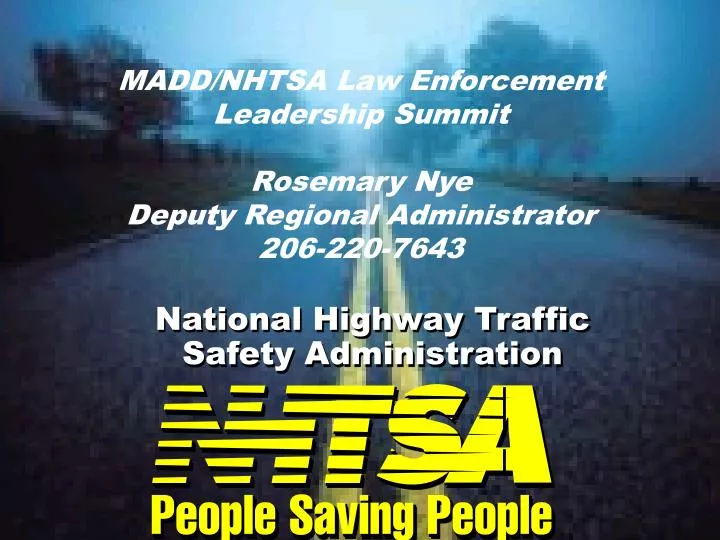
In 1958, under the auspices of the United Nations, a consortium called the Economic Commission for Europe had been established to normalize vehicle regulations across Europe to standardize best practices in vehicle design and equipment and minimize technical barriers to pan-European vehicle trade and traffic. International counterparts and the grey market Most of the reduction in vehicle fatality rates during the last third of the 20th century were gained from the initial NHTSA safety standards during 1968–1984 and subsequent voluntary changes in vehicle crashworthiness by vehicle manufacturers. Other than that, NHTSA has issued only a few regulations in the past 25 years. This technology was first brought to public attention in 1997, with the Swedish moose test. The agency has introduced a proposal to mandate Electronic Stability Control on all passenger vehicles by the 2012 model year. NHTSA has conducted numerous high-profile investigations of automotive safety issues, including the Audi 5000/60 Minutes affair, the Ford Explorer rollover problem, and the Toyota sticky accelerator pedal problem.

The number of deaths on American highways hovers around 33,000 annually, a lower death rate per vehicle-mile traveled than in the 1960s. Since then, automobiles have become far better at protecting their occupants in vehicle impacts. 947, enacted October 20, 1972) expanded NHTSA's scope to include consumer information programs. In 1972, the Motor Vehicle Information and Cost Savings Act ( Pub.L. Once the Federal Motor Vehicle Safety Standards (FMVSS) came into effect, vehicles not certified by the maker or importer as compliant with US safety standards were no longer legal to import into the United States.Ĭongress established NHTSA in 1970 with the Highway Safety Act of 1970 (Title II of Pub.L. 89–564) that created the National Traffic Safety Agency, the National Highway Safety Agency, and the National Highway Safety Bureau, predecessor agencies to what would eventually become NHTSA.

Legislation signed by President Lyndon Johnson earlier on September 9, 1966, included the National Traffic and Motor Vehicle Safety Act ( Pub.L. Department of Transportation on Octo( Pub.L.
NATIONAL HIGHWAY TRAFFIC SAFETY ADMINISTRATION SERIES
In 1966, Congress held a series of publicized hearings regarding highway safety, passed legislation to make the installation of seat belts mandatory, and created the U.S. In 19, public pressure grew in the United States to increase the safety of cars, culminating with the publishing of Unsafe at Any Speed, by Ralph Nader, an activist lawyer, and the report prepared by the National Academy of Sciences entitled Accidental Death and Disability: The Neglected Disease of Modern Society.

The agency has asserted preemptive regulatory authority over greenhouse gas emissions, but this has been disputed by such state regulatory agencies as the California Air Resources Board. safety testing as well as the test protocols themselves, and provides vehicle insurance cost information. NHTSA also licenses vehicle manufacturers and importers, allows or blocks the import of vehicles and safety-regulated vehicle parts, administers the vehicle identification number (VIN) system, develops the anthropomorphic dummies used in U.S. FMVSS 209 was the first standard to become effective on March 1, 1967. NHTSA is charged with writing and enforcing Federal Motor Vehicle Safety Standards as well as regulations for motor vehicle theft resistance and fuel economy, as part of the Corporate Average Fuel Economy (CAFE) system. It describes its mission as "Save lives, prevent injuries, reduce vehicle-related crashes" related to transportation safety in the United States. federal government, part of the Department of Transportation. The National Highway Traffic Safety Administration ( NHTSA / ˈ n ɪ t s ə/ NITS-ə) is an agency of the U.S.


 0 kommentar(er)
0 kommentar(er)
